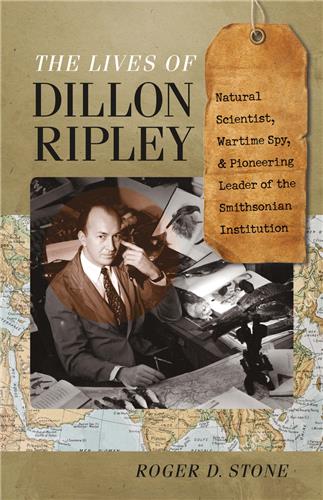Stone has produced a riveting biography of the man who held for two decades ‘the world’s top cultural job.’ He shows how Ripley navigated the period’s mood swings with numerous firsts, such as reaching multiracial crowds with the Folklife Festival.
A Yale-educated Renaissance man, S. Dillon Ripley was a “courtly, determined, hugely ambitious, energetic, funny, and colorful ornithologist, conservationist, and cultural standard-bearer” who led the Smithsonian Institution for twenty years, during its greatest period of growth. During his watch, from 1964 to 1984, the SI added eight new museums and seven new research centers and began publication of the Smithsonian magazine. It was Ripley’s vision that transformed “the nation’s attic” from a dusty archive to a vibrant educational and cultural institution, just as he had transformed Yale’s Peabody museum before it. Prior to his career at the SI, and running parallel with it for the rest of his life, was Ripley’s work as an ornithologist, begun in New Guinea in the 1930s, continued through his PhD from Harvard in 1943, and culminating in his landmark thirty-year project documenting the bird life of India. His lifelong passion for ornithology led him to positions of leadership in worldwide nature conservation. In the midst of these endeavors he was recruited in 1944 to the Office of Strategic Services, a Yalie club at the outset that became the forerunner of the modern CIA. Posted to Ceylon, he recruited and ran agents who reported from and infiltrated Japanese-held Southeast Asia. Roger D. Stone worked with Ripley on the board of the World Wildlife Fund. He has access to the Ripley family’s archives and photos, as well as to the voluminous archives at the Smithsonian and the National Archives, and to over forty hours of transcribed interviews, conducted with Ripley at the Smithsonian.


Stone has produced a riveting biography of the man who held for two decades ‘the world’s top cultural job.’ He shows how Ripley navigated the period’s mood swings with numerous firsts, such as reaching multiracial crowds with the Folklife Festival.
Dillon Ripley, a star in the firmament of twentieth-century scholars and naturalists, was for twenty years an imaginatively effective secretary of the Smithsonian Institution. Roger Stone, one of a host of talented friends and admirers, has written the memoir that Dillon Ripley, because of illness, could not complete. . . . Stone’s admirably relentless scholarship celebrates just how much fun it could be ‘to go for a walk with Ripley,’ as observed by one of Dillon Ripley’s contemporaries.
ROGER D. STONE is a former correspondent and bureau chief for Time magazine, former president of the Center for Inter-American Relations, director and president of the Sustainable Development Institute, and a board member of the World Wildlife Fund, where he served with Dillon Ripley. He is the author of six previous books. He lives in Washington, DC.

Founded in 1971, Brandeis University Press is a nonprofit publisher dedicated to publishing innovative, high-quality books for a general audience, as well as scholarship that advances knowledge and promotes dialogue in the humanities, arts, and social sciences around the world.
© Copyright 2024, Brandeis University Press
Brandeis University Press
Goldfarb Library 69-235, MS 046
Brandeis University
415 South Street
Waltham, MA 02453
(781) 736-4547
pressinfo@brandeis.edu

Stay up to date with the newest titles and promotions from Brandeis University Press—while saving 20% on your first purchase.